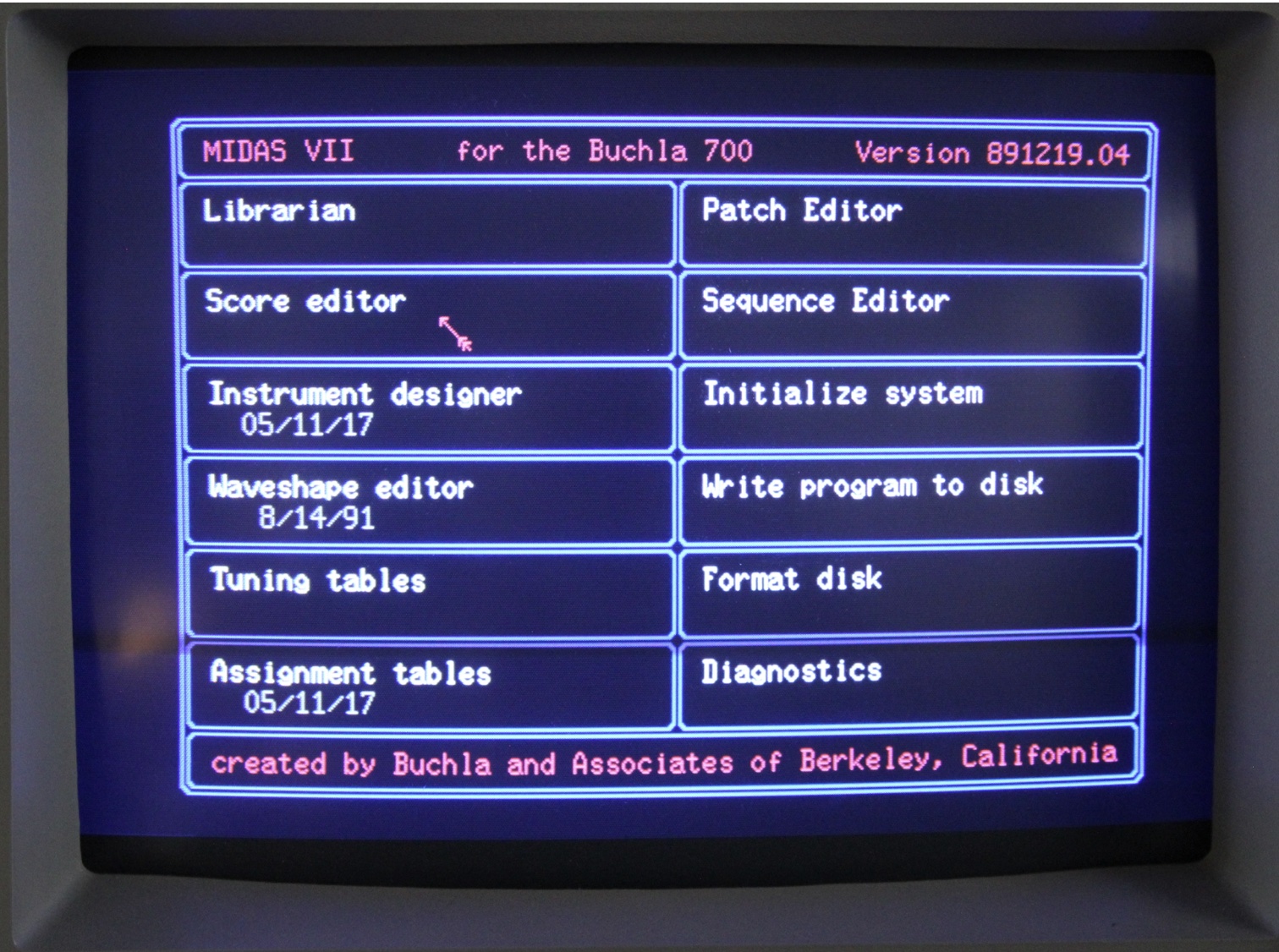Frequently Asked Questions
What is ID700?
ID700 is a software synthesizer inspired by the Buchla 700.
What happened to Instrument Designer?
ID700 was formerly known as Instrument Designer, which was the name of the main interface on the Buchla 700.

That name wasn't ideal for several reasons but the deal-breaker was being too long for a proper iOS name ("Instrument D....." is not quite the same).
Ok, what is the Buchla 700?
The Buchla 700 is a 12 voice 4 operator FM synthesizer released in 1987 and designed by Don Buchla. There are several main ways the 700 differentiates itself from the other FM synths common in the industry at that time:
- Each algorithm outputs through two independent waveshapers. This allows a single instrument definition to output two different audio signals without requiring a separate stacked voice. This also increases the sonic palette by allowing a user to easily create non-sinusoid waveforms.
- The waveshapers are cousins to the ones used in the Buchla Touché, Buchla 400 and the Buchla 259e. They are quite unique and use some interesting waveshaping techniques.
- Each voice has 13 complex envelopes which control almost every aspect of the sound algorithms. The envelopes have a unique exponential display, are programmable with an arbitrary number of breakpoints, and are jumpable/loopable.
- Programming was simplified with the help of a graphical user interface and an external monitor.
Is ID700 a clone/emulation of the Buchla 700?
ID700 is not a clone or emulation of the Buchla 700. ID700 is a modern interpretation of what I found interesting in the Buchla 700. Specifically, I focused on creating sounds for a single voice ("Instrument" in Buchla 700 terminology).What does the Buchla 700 sound like?
There weren't a lot of these produced, so there's not that much out there. What is out there is quite interesting:
- Shasta Cults — Configurations
- Charles Cohen — Generator
- Benge — Chimeror
- Ode To Gravity — this is from the release party for the 700 and includes interviews with Don
So what happened to the Buchla 700?
The instrument never became very popular and today is one of the rarer of Don Buchla's instruments (which says a lot). The software itself was never finished, and the video card which connected up the external display was unreliable and eventually end-of-lifed by Intel. Probably 10-15 of these were made - I personally know of 3, of which only 2 currently work.
Why hasn't anyone made a Buchla 700 reissue?
Good question. The design is quite complicated and includes 4 separate computers as well as a large membrane input surface. It would certainly be possible to build but it wouldn't be a cheap endeavor, and unlike other recent reissues it probably wouldn't be a big seller - it's likely the most difficult instrument of Don's to use.
So why are you bothering with ID700?
I love the sound of Don's wavetable synths (specifically the 259e) and I've spent a lot of time implementing various related algorithms. I had the opportunity to play around with a 700 a few years back and the idea was hatched there.
Are you using the original Buchla 700 source code?
No. This entire project was implemented using a scan of the original 700 manual as the spec (which was the usual Don way of doing things). You can view what survives from the original source code here. It's mostly UI and low-level hardware utilities, but it seemingly contains code used for a NASA project as well:
Set ON_B700 non-zero to get a Buchla 700 PROM, or zero to get a NASA 3D Helmet Display PROM.There is a project that's managed to get it to boot. Unfortunately , since the source code doesn't include any DSP there's no sound.
Where can I learn more about the Buchla 700?
- The Buchla 700 Preservation Page
- Notes on the Buchla 700 audio synthesizer
- Buchla 700 archeology
- Buchla 700
- Chimeror by Benge
- The Buchla 700 Emulation Project
- Alessandro Cortini of Nine Inch Nails playing a Buchla 700 in Twin Peaks — I don't know if the sound is actually 700 or not but who cares?
- vBuchla-700 - a Buchla 700 Recreation Project
- b700ish - A rough approximation of the Buchla 700 voice architecture in the Supercollider programming language from Aaron Lanterman